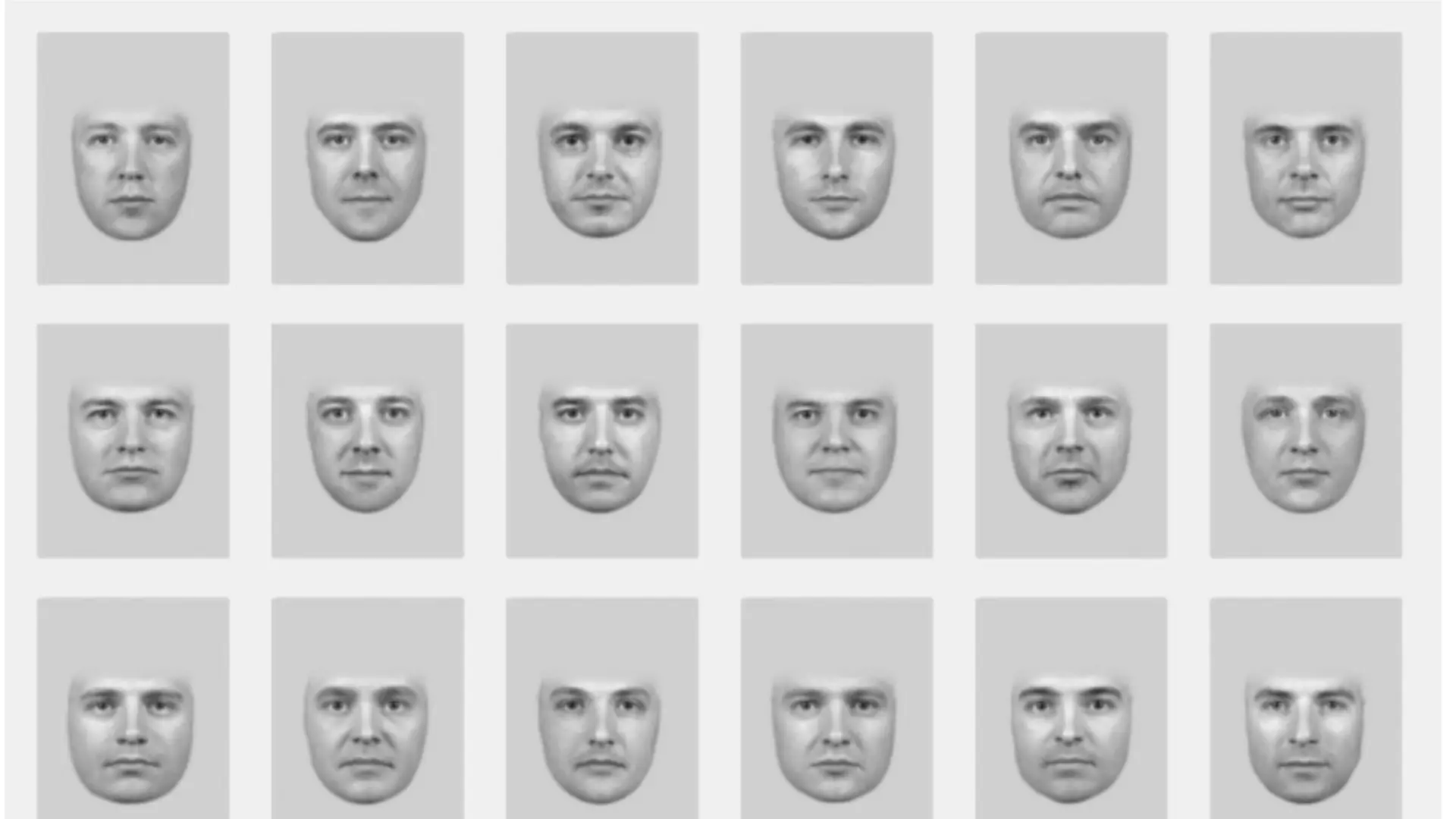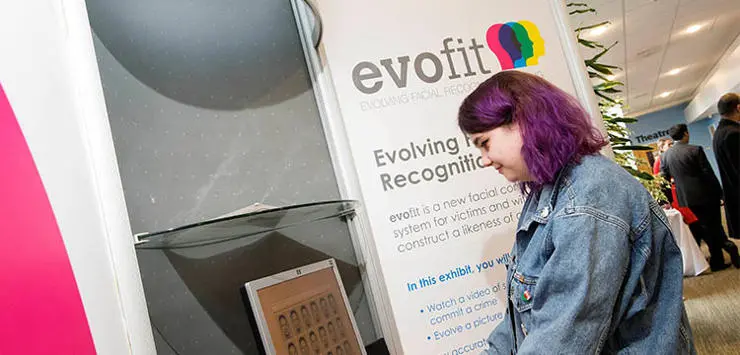Police use composites to identify potential suspects, usually in cases of serious crime (e.g., those involving rape, murder and aggravated burglary), and so maximising the effectiveness of composite images from this form of forensic evidence is of importance both in terms of best use of police resources and correct identification of offenders. The project focuses on methods for evolving the most identifiable likeness of a face, looking specifically at what is referred to as ‘population size’. In this case, how many faces should witnesses be shown for selecting best matches (of a target face), whether more examples would be preferable in the first or second pass (‘generation’) through the system, the importance of facial shape and texture information, and the optimal evolving procedure to use based on strength of memory.
Carefully designed experiments are exploring the best evolving strategies to use, based on the tried-and-tested “replication and extension” model. When assessed using procedures designed to mirror real life use of composites, including construction of an unfamiliar face seen the previous day, initial results indicate that a smaller population size is more effective in general than a larger one, to promote more identifiable faces. This finding is currently being assessed by forensic practitioners of the EvoFIT system in the UK and abroad.
Members:
Project lead: Dr Beth Richardson
Project staff: Elizabeth Jackson
Collaborators and partners: Professor Charlie Frowd, Dr Cristina Fodarella


